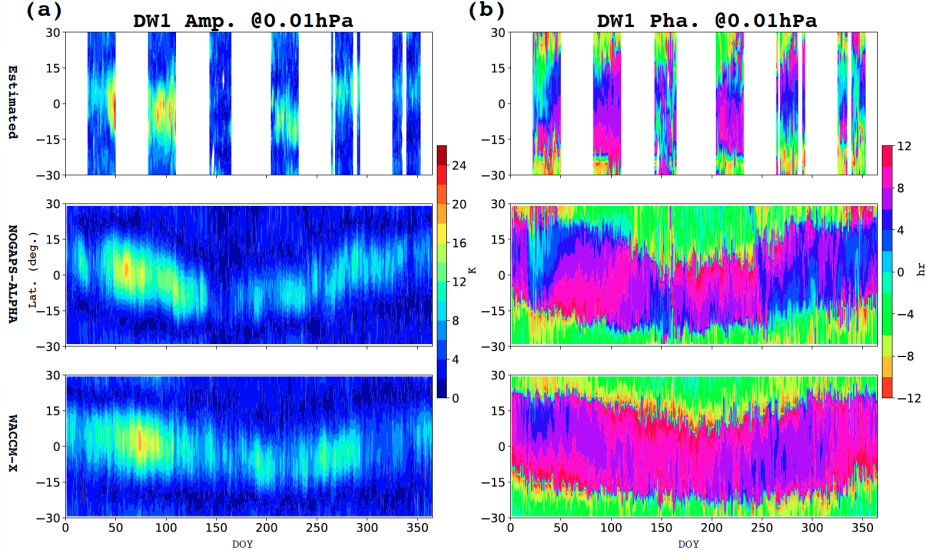Publication: Journal of Geophysical Research, Space Physics; Authors: Jack C. Wang, Scott E. Palo, Hanli Liu, D. E. Siskind
The migrating diurnal tide (DW1) is one of the dominant wave motions in the mesosphere and lower thermosphere. It plays a crucial role in neutral atmosphere and ionosphere coupling. The DW1 can vary over a range of time scales from days to years. While the long-term variability of the DW1 is mainly attributed to the source and background atmosphere variability, the driving mechanism of short-term DW1 variability is still openly debated. Herein the daily structure of the DW1 is extracted from observations using a novel multi-satellite estimation technique and compared with model simulations (NOGAPS-ALPHA and WACCM-X).

Daily values of migrating diurnal tidal amplitudes (left panel) and phases (right panel) at 1E-2 hPa (80 km) from the novel multiple satellite analysis method described in this paper (upper panel), NOGAPS-ALPHA (middle panel), and WACCM-X (lower panel).
Both the observations and the models show that the day-to-day variability of the DW1 is a persistent and ubiquitous feature. The standard deviation peak of DW1 amplitudes, which is used to measure the maximum variability, is generally aligned with the DW1 amplitude peak. This result indicates that the day-to-day variability of the DW1 reflects global-scale changes rather than local excitation of diurnal oscillation. The spatial lag-correlation analysis of the diurnal (1,1) and (1,2) Hough modes suggests that the day-to-day variability of the diurnal (1,1) Hough mode is likely driven by variability in the lower atmosphere and the source of day-to-day variability of the (1,2) mode is uncertain. The signicant correlation of the DW1 day-to-day variability between the NOGAPS-ALPHA and the multi-satellite estimation techniques also indicates that the model is capable of reproducing the DW1 structure on a daily basis.